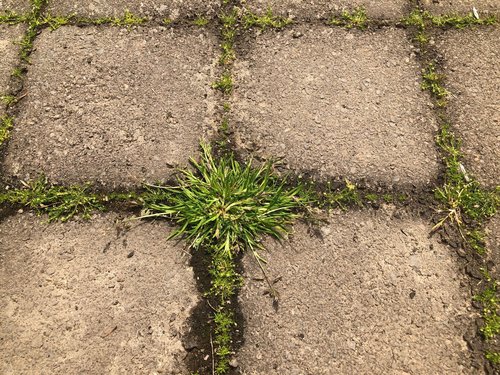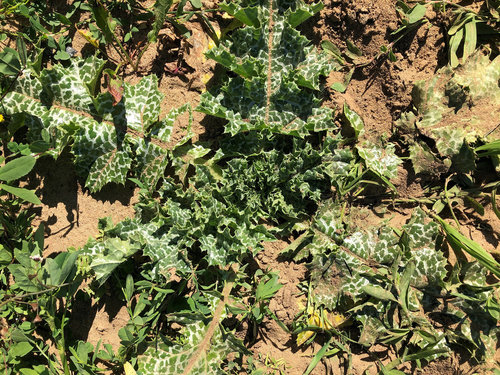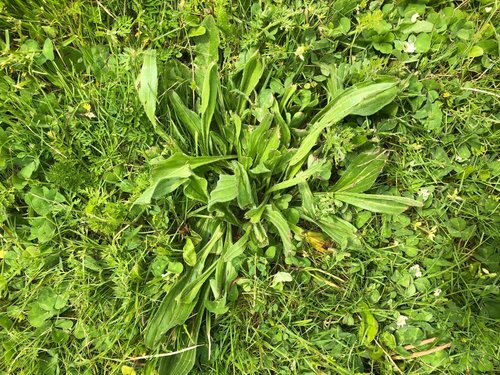You can see that your neighbor has weeds in their lawn, but what specific weeds are they combating? It is critical to identify what weeds are at play because some weeds only respond to certain herbicides, while others may have no effect at all. Additionally, if your neighbor researches the weed’s characteristics, they can determine the best time of year to manage it and how it repopulates.
The first step in turfgrass weed identification is to determine its morphology: is the weed a grass or a broadleaf?
- Grassy weeds:
- Monocot: One cotyledon coming out of the seed upon germination.
- Parallel vein structure on the leaf.
- Fibrous roots
- Examples: Annual bluegrass (pictured below), sedges, crabgrass

- Broadleaf weeds:
- Dicot: Two cotyledons coming out of the seed upon germination.
- Netted or webbed vein structure on leaf.
- Taproots
- Examples: Dandelion, clover (pictured below), chickweed

Another way to identify weeds are by their lifecycle. Weeds can be characterized into three lifecycles: annual, biennial, and perennial.
- Annual: One growing season
- Summer annual: Emerge in spring, die in the fall
- Winter annual: Emerge in the fall, die in the spring
- These rapidly deplete surrounding nutrients compared to other weeds and should be managed immediately.
- Examples: Crabgrass, chickweed, common mallow (pictured below)

- Biennial: Two growing seasons
- First year of growth, vegetative structure is formed
- Second year of growth, reproductive structures are formed
- Typically rosette-shaped
- Examples, Common mullein, thistles (pictured below), poison hemlock

- Perennial: Two or more growing seasons
- Can reproduce vegetatively and via seed
- Creates a taproot for long-term nutrient storage
- Examples, Buckhorn Plantain (pictured below), dandelion, Queen Anne’s lace

A multitude of university extension programs, online identification guides, and phone applications exist to help you and your neighbor figure out what is causing a nuisance on their lawn. These tools will ask if you know the weed’s lifecycle or morphology, in addition to that, they will ask if you can spot some other defining features such as where you found it, how it grows, hairs or spines present, or flower characteristics. Once the weed is correctly identified, some light internet research will provide you a laundry list of management methods. Generally, you will find that results simmer down into weed prevention, control, eradication, and management.







